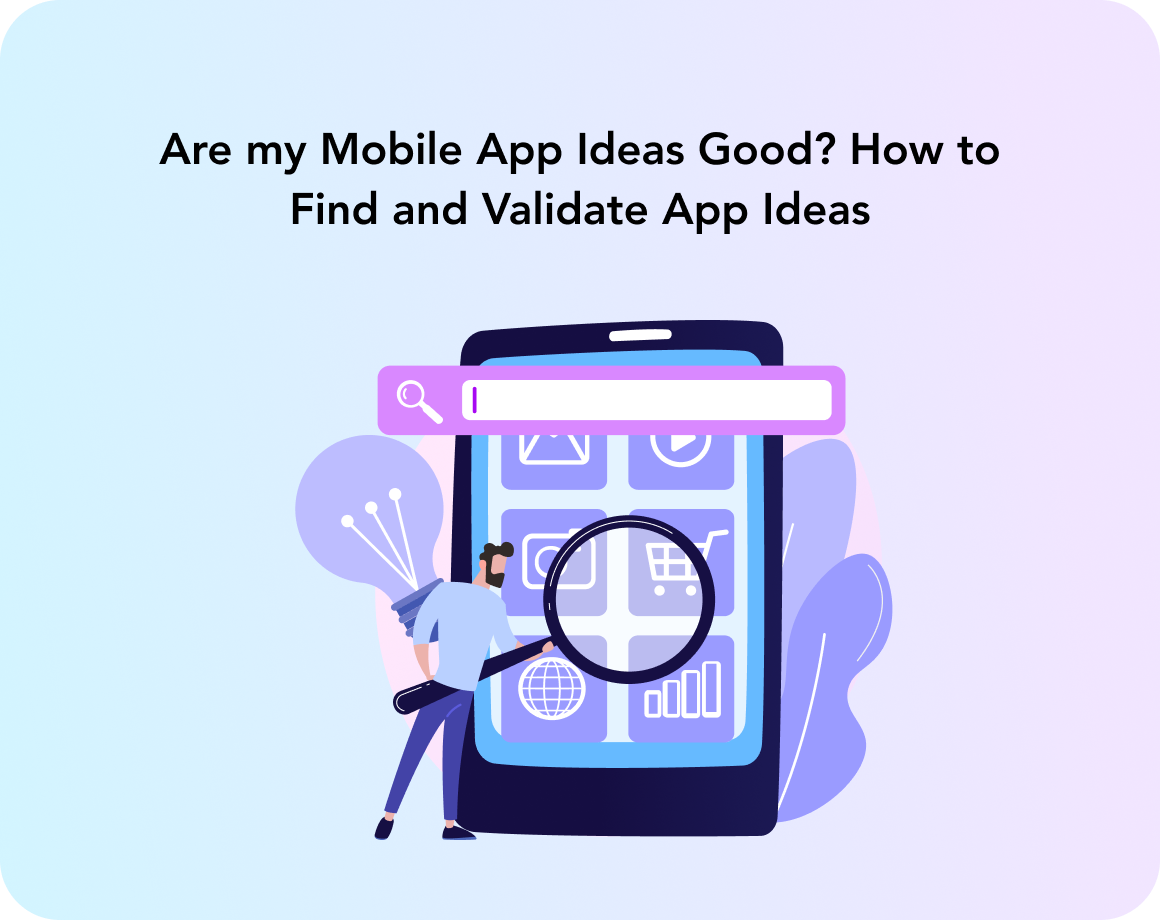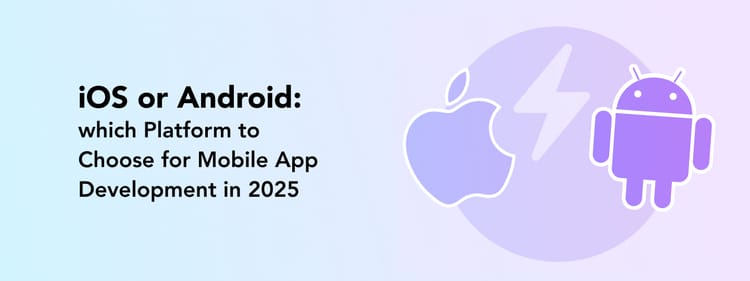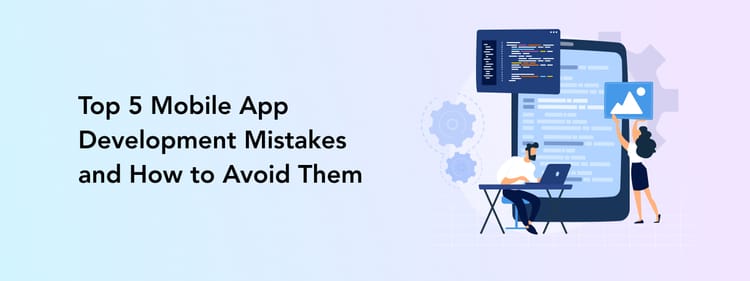Any successful app development process starts with an excellent idea. The concept of an app determines how many users your product will attract, whether it can compete with similar solutions, and if there is a place for such an application on the market all in all.
No matter how carefully chosen your UI elements are and which cutting-edge technologies you implement, if your app idea doesn’t match the market’s and users’ needs, it can't reach great success.
So how to find ideas for app that will shake the market and win users’ hearts? In this article, we will discuss the main steps of validating an app idea and share a few tips on how to make sure you deliver an anticipated and relevant product.

How Can I Be Sure if My Idea for a Mobile App Is a Good One?
Usually, when a new client comes to us for mobile app design and Android or iOS application development services, they already have a general idea of the application they want to see and the direction to go. “I have an app idea, now what?” is a more common request than you might think.
Our job in such cases is to develop a sometimes rather vague concept into a set of precise requirements as well as make sure that the idea is viable. There are 6 steps on how to validate application ideas.
Analyze the market
Any app will undoubtedly compete with similar existing solutions. Our task is to research what the current app market looks like. The main questions here are
- Are there similar applications to what we are about to develop?
- How many products are already competing in the market?
- How many users do the most successful and mid-range apps have?
- What are the financial numbers for this market, and what are the growth rates and predictions?
- How many new companies enter this market annually? Do startups get funding?
Doing this somewhat simple online research helps you understand where the app will stand and which perspectives await it.
Identify your competitors
After taking some time to explore the general situation in the market, you can take a closer look at each of your app’s competitors. It’s a chance to understand why users give preference to a certain product and which needs it covers. This step is not about directly copying your competitor’s strategies and feature sets: you simply need to know what attracts users to the apps and what are the industry’s best practices.
A common way to assess your competitors is a SWOT analysis. By evaluating the strengths, weaknesses, opportunities, and threats of a certain product, you can get a better idea of what they have to offer and what you can have that they don’t.
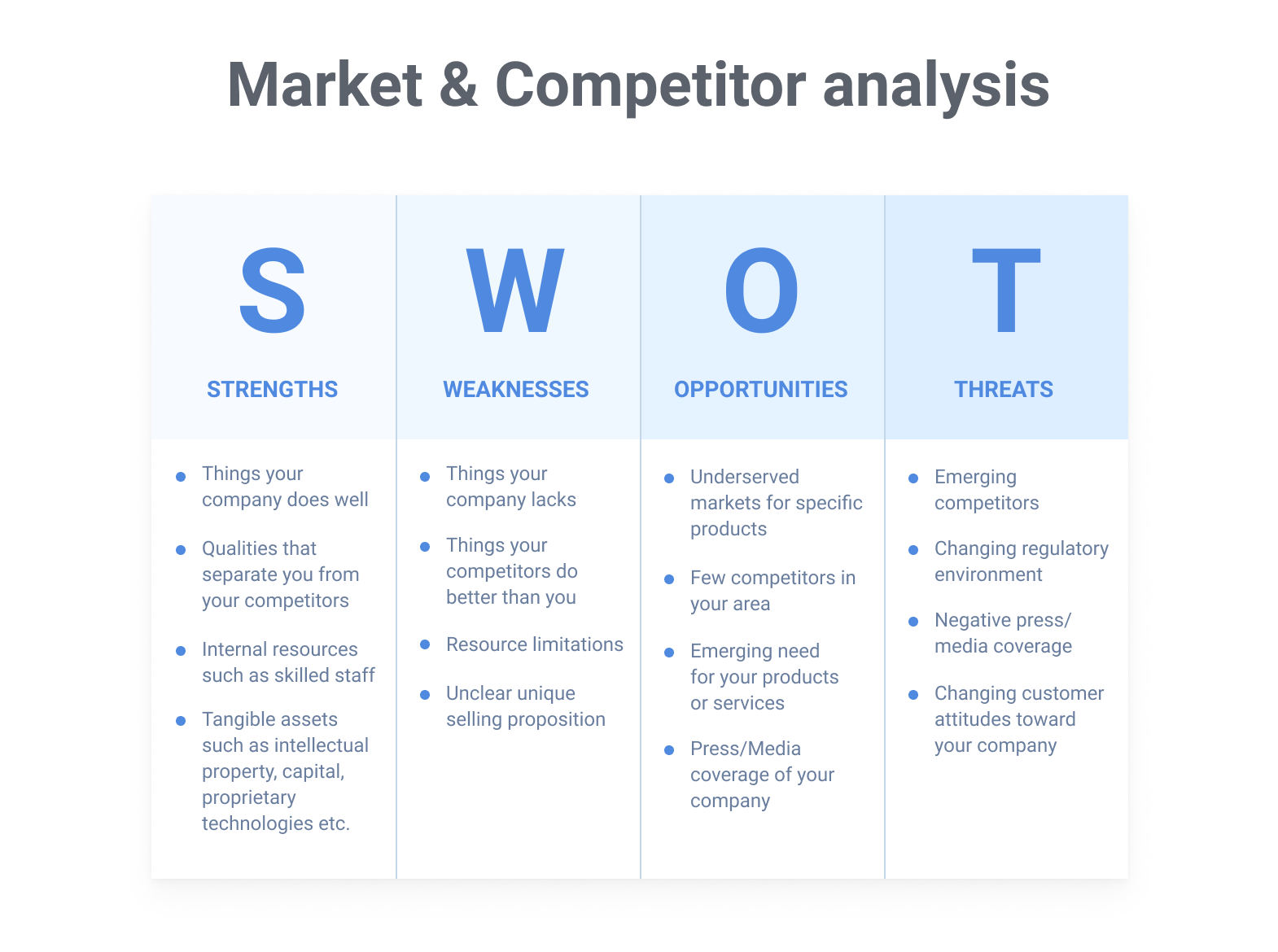
Come up with a user persona
After investigating the landscape and learning what other apps have to offer, it’s time to focus on what you can showcase. To choose a feature set that will help your users solve particular requests, it’s best to first understand who your potential users are.
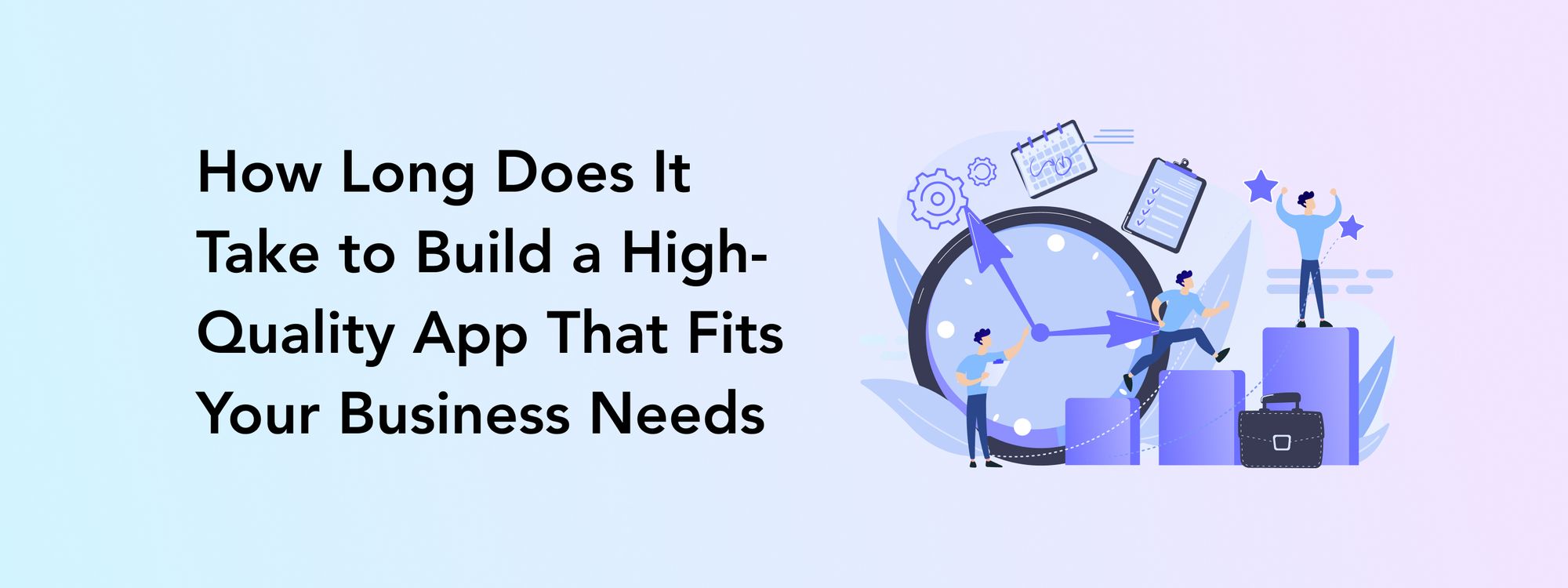
To do so, our design team usually creates user personas: hypothetical users with their own lifestyles, interests, pain points, and reasons to download your app. User persona research allows designers and startup owners to take a deeper look at who your potential audience is and what they will be looking for in your product.
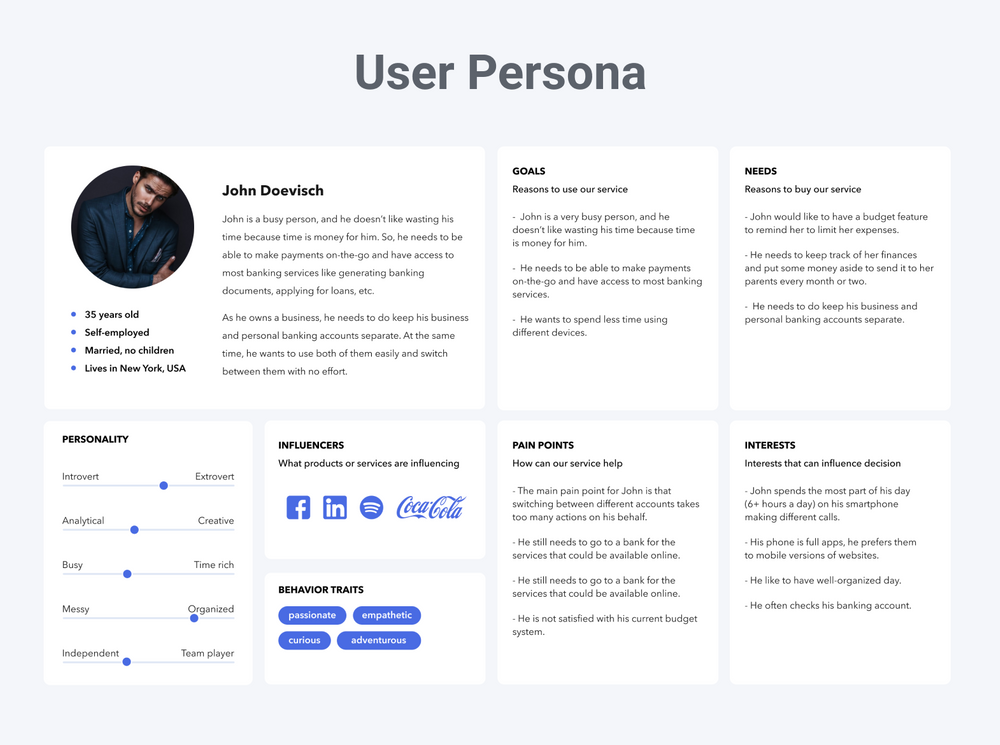
Develop an MVP
Based on all the completed research work, the UI/UX design and app development teams can create the first version of the application: an MVP (minimum viable product). An MVP is a basic application that presents the must-have features to attract and retain users. In other words, an MVP is the first version of your product, which contains the feature set enough to highlight your competitive value and make a strong presence on the market.
With MVP, you don’t need to put huge budgets down the drain but rather can test your app hypothesis with a low-budget yet viable application. Releasing an MVP is the best way to test your idea in real market settings and see whether it’s worth investing more money into it.
Invite some beta testers
After you release your MVP application into the cold waters of a real market, it would be a good idea to invite some beta testers to take a closer look at your app and share their honest feedback. Your beta testers can be anyone, from family members and friends to hired freelancers. Of course, it’s best to find someone from your target audience and actually interested in the app’s theme.
It’s important to understand that beta testers are not professional QA specialists searching for technical or design flaws. They are looking at your app through the eyes of an average user and pointing out their likes and dislikes in a questionnaire or interview.

3 Tips on How to Generate Unique Mobile App Ideas
The process of app idea validation is simple enough if done carefully and methodically. Having a clear step-by-step process of app idea validation will help you avoid the chaos of having too many options and the disappointment of investing in an unfeasible product.
There are some extra tips on how to validate app ideas we give our clients at Perpetio at the business development consultations.
Ask your audience
To gain a competitive advantage and win over other similar apps, your product needs to have something unique and what users would want to see in this app type. A very straight-forward way to validate app idea and understand how the audience would feel about it is simply asking.
To understand what kind of a cherry on top to add, try reading user reviews online or visiting forums discussing the industry. For example, if you want to develop a running app, check other fitness apps’ App Store and Google Play reviews, surf the running groups online, go to running events, and ask people directly which apps are they using, how they like them, and what would make their experience better.
Take inspiration from the success stories
Who are the industry leaders in the market you are about to enter? Make some notes on the most successful apps currently dominating the niche — you might need those when thinking about how to validate ideas for app and coming up with the feature set.
Remember our strategy with the competitor analysis? Get inspired by the best practices and notice what’s missing — these are two of your main quests. Apart from that, pay attention to the UI design, app’s navigation, monetization strategies, and tone of voice. By reviewing successful apps from your niche, you can understand what works well and what should be changed to meet users' needs better.
Get assistance from professionals
If you need extra help with how to find app ideas, contact experienced developers or agencies who can provide advice on the best strategies. Professional app development companies, including Perpetio, have years of experience creating mobile apps for a variety of industries.
A team that knows all the app development ins and outs can assist you with streamlining the application idea validation process and give you confidence in the upcoming product. Making sure that the app you are about to spend a lot of effort on will be well-perceived on the market is a basic concern any business owner might have. Having some extra support and deeper insights into the product’s competitiveness is a way to build a truly successful project and forget about the anxieties.
Monetization Strategies for Mobile App
An app idea validation process is one thing, making money out of it is a whole different quest. There are several monetization models to choose between for your application.
Freemium model
One of the most successful ways to monetize a mobile app is through the freemium model. This model allows users to try out a basic version of your app for free but encourages them to pay for additional features, content upgrades, or an ad-free experience. The key benefit of this model is that it helps bring in new users who may then consider buying the premium version.
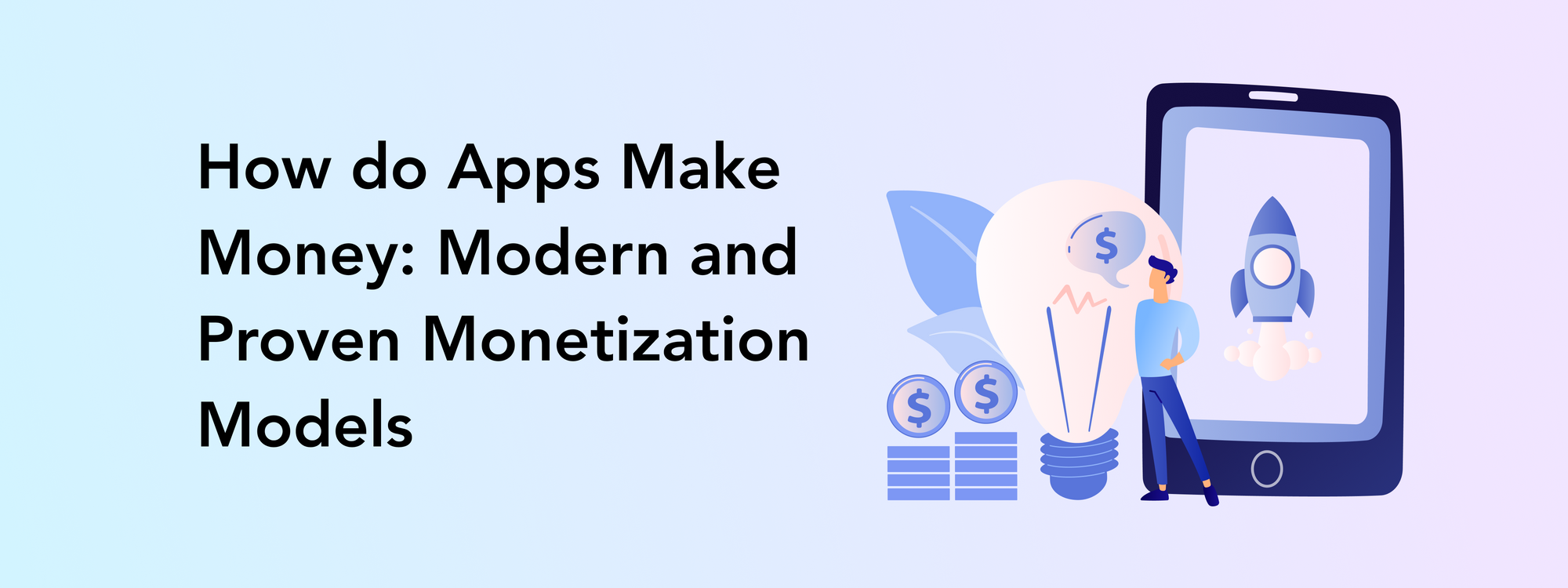
In-app purchases
Another popular way to get money from an application is by offering in-app purchases. This approach involves selling virtual goods and extra services, such as access levels, power-ups, additional content, etc., directly within the app. Just like the freemium model, the in-app purchases approach gives you a chance to appeal to a wider audience through a free app while making some profit by selling the extra items.
Subscriptions
Subscriptions are another great option for monetizing an application since they enable recurring payments from customers on a regular basis. By giving people access to exclusive features or content that requires payment after a certain period has elapsed, you can significantly increase user retention rate and maximize potential revenue. Give your users a free trial, let’s say 14 days, to get a taste of it and motivate them to stay with you as a subscriber.
In-app advertising
In-app advertising provides another income opportunity by displaying ads in the very app’s interface. It is a rather simple way to make money from a free app as users will engage with it while you don’t need to come up with an elaborate monetization strategy. Ads can be tailored to your app’s theme (e.g. running clothing for a fitness app) or user profile, and display different types of ad experiences for each user type, thus increasing the conversion rate.
Paid app
Last but not least, there is always a classic paid app strategy where users must purchase the application before gaining access to any of its functionalities. Although this often doesn't yield very high returns compared to other options mentioned above, it can still work well depending on the app type and your unique selling proposition. Offering a free trial is a good idea to showcase what the users will be paying for and “sell” your app.

Consider Perpetio Your Trusted Partner
As an iOS and Android app development company, we at Perpetio assisted a bunch of app owners in how to validate application idea and conducted the needed research to make sure that the app will be well-received in the market. Let us share one of our recent cases of monetization model setup.
eargym is a mobile application for assessing and improving one’s hearing. The application offers a set of hearing tests along with exercises for improving one’s hearing health.
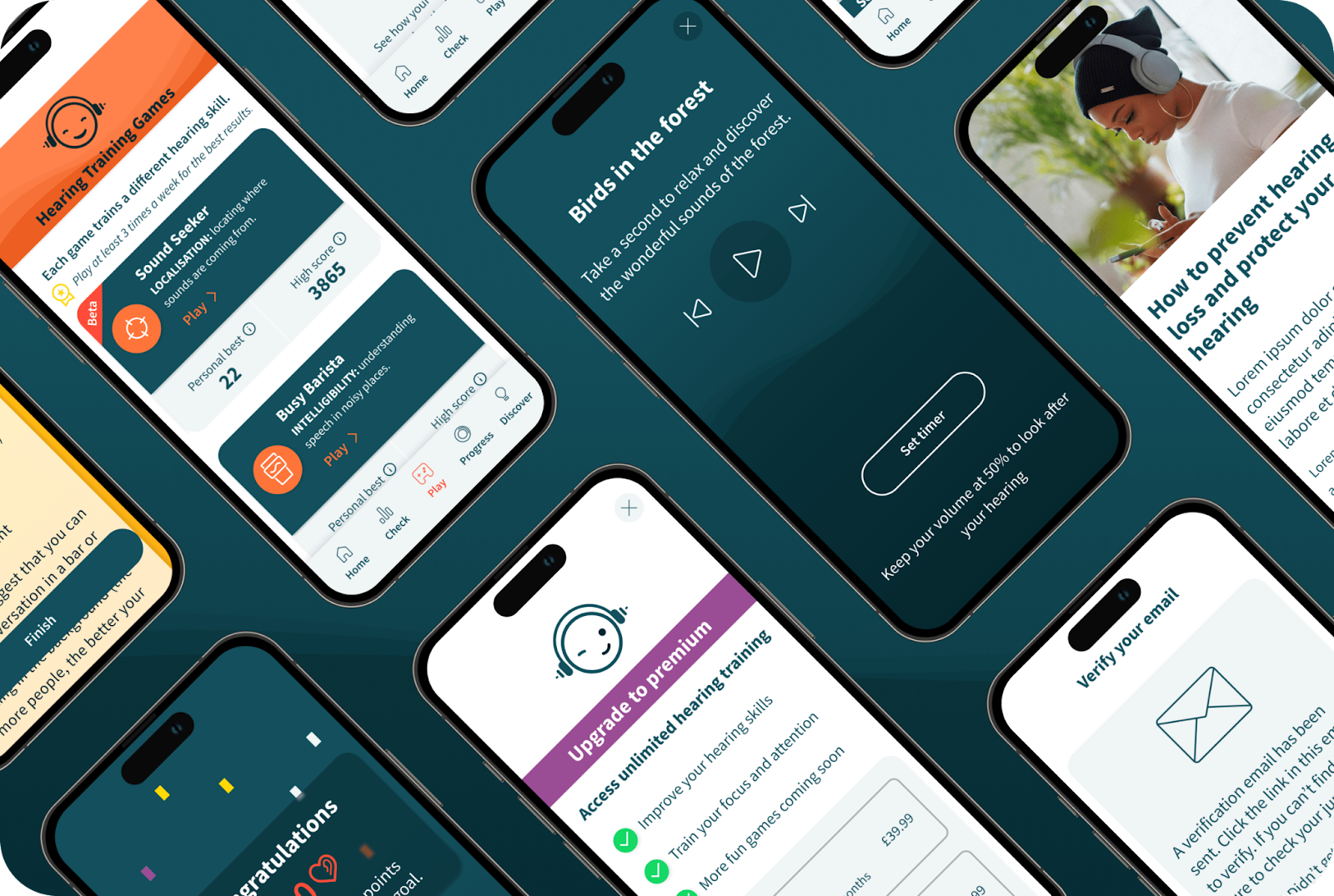
During the collaboration, Perpetio proposed modifying the app's structure by introducing a premium version with a free trial as an effective monetization model. Previously, a premium version was offered without a free trial, which failed to motivate users to purchase the paid version of the app. Based on A/B testing, it was discovered that a 14-day free trial boosted the number of active users by 40%.
Inspired by this result? Let’s partner up to find your spark too — Perpetio is a reliable full cycle product development services provider. We offer free business and tech consulting along the way.
FAQ
How do I know if my mobile app idea is good?
There are several ways to determine if your mobile app idea is good, including conducting market and competitor research, testing the app out with beta users, and releasing an MVP version of the app.
What are some common mistakes to avoid when coming up with mobile app ideas?
Some common mistakes to avoid when coming up with mobile app ideas include not researching the market, creating an app without a clear value proposition, and not considering the target audience.
How can I validate my mobile app idea before investing time and resources into development?
To validate your mobile app idea before investing time and resources into development, you should conduct market research, create an MVP, conduct surveys or focus groups, and seek advice from experts.
What are the key factors to consider when researching the market for mobile app ideas?
The key factors to consider when researching the market for an app include user needs, market size, competition, and monetization opportunities.
How important is identifying a target audience when developing mobile app ideas?
Identifying your target audience is crucial for offering features users would be interested in, having high download and engagement rates, and choosing an appropriate monetization strategy.
How do I know if I should move forward with developing my mobile app idea?
You should validate your app idea through a set of methods, like market investigation and user persona research before investing in the app development.
